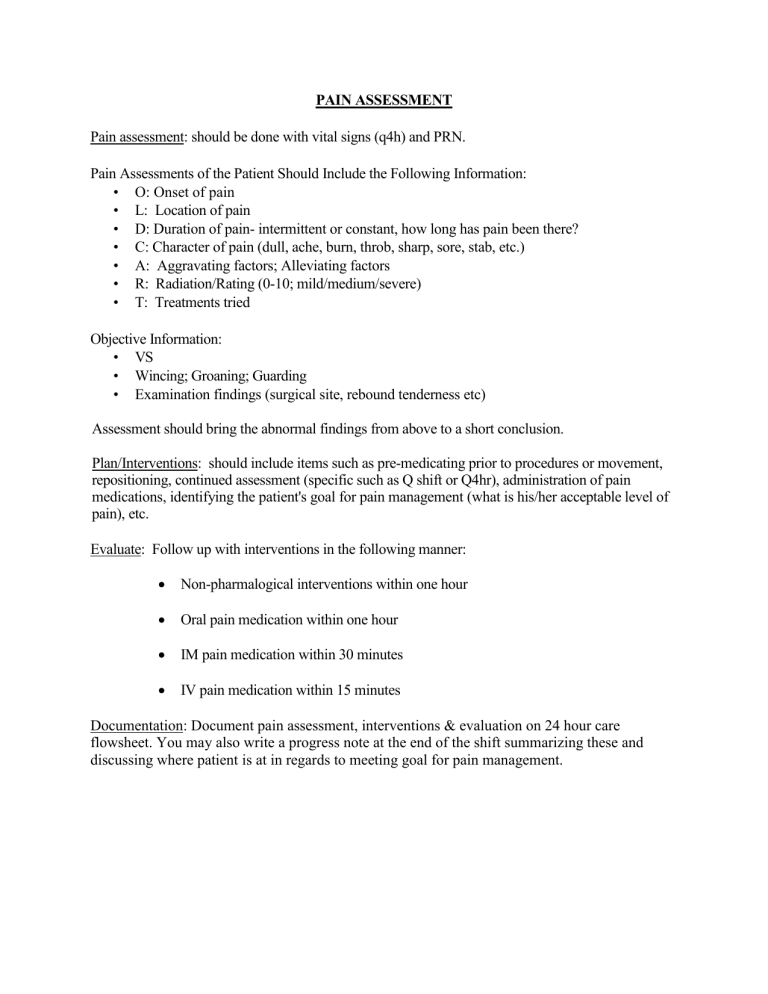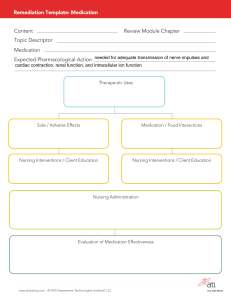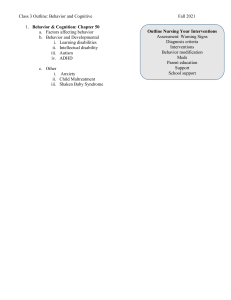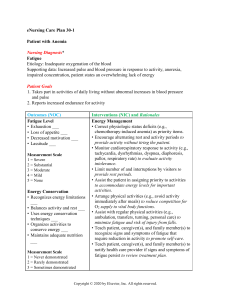
PAIN ASSESSMENT Pain assessment: should be done with vital signs (q4h) and PRN. Pain Assessments of the Patient Should Include the Following Information: • O: Onset of pain • L: Location of pain • D: Duration of pain- intermittent or constant, how long has pain been there? • C: Character of pain (dull, ache, burn, throb, sharp, sore, stab, etc.) • A: Aggravating factors; Alleviating factors • R: Radiation/Rating (0-10; mild/medium/severe) • T: Treatments tried Objective Information: • VS • Wincing; Groaning; Guarding • Examination findings (surgical site, rebound tenderness etc) Assessment should bring the abnormal findings from above to a short conclusion. Plan/Interventions: should include items such as pre-medicating prior to procedures or movement, repositioning, continued assessment (specific such as Q shift or Q4hr), administration of pain medications, identifying the patient's goal for pain management (what is his/her acceptable level of pain), etc. Evaluate: Follow up with interventions in the following manner: Non-pharmalogical interventions within one hour Oral pain medication within one hour IM pain medication within 30 minutes IV pain medication within 15 minutes Documentation: Document pain assessment, interventions & evaluation on 24 hour care flowsheet. You may also write a progress note at the end of the shift summarizing these and discussing where patient is at in regards to meeting goal for pain management.







